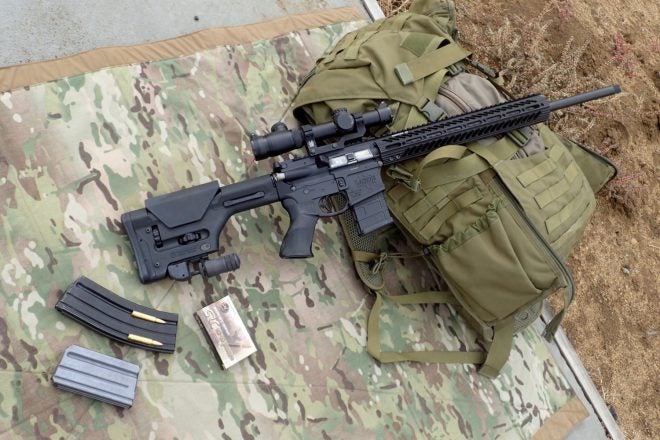Variety is the spice of life. In the firearm industry, there is a hell of a lot of variety when it comes to cartridge selection, particularly out of the nowadays ubiquitous AR15 platform. One of the newer cartridge choices for medium game hunting out of the AR15 is the .25-45 Sharps. For in-depth analysis on the .25-45 Sharps cartridge, including the the providence of it’s rather unconventional nomenclature, Nathaniel F. has written two articles on the subject that can be found found here and here. Sharps Rifle Company was nice enough to send us one of their uppers chambered in this caliber for testing, along with some of their 87gr loads with Speer Hot-Cor SP bullets.
Initial Impressions
The upper came with a nice list of features. The build included Sharp’s Relia-Bolt, (a great product in its own right), combined with SRC’s Balanced Bolt Carrier and Diamondhead handguards. The barrel was a stainless steel 20″ with a matte black oxide finish. Twist rate was 1:10 and the muzzle was threaded 5/8″x24. I attached the upper to a LaRue OBR lower, and the fit was absolutely tight with no rattle or movement.
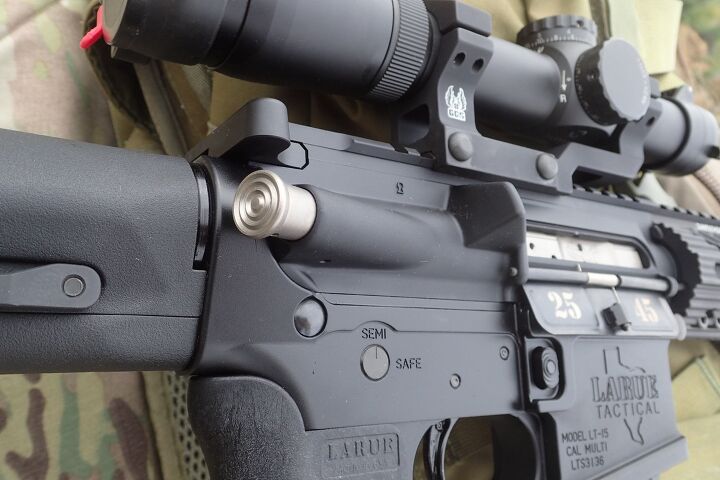
Very tight fit between upper and lower
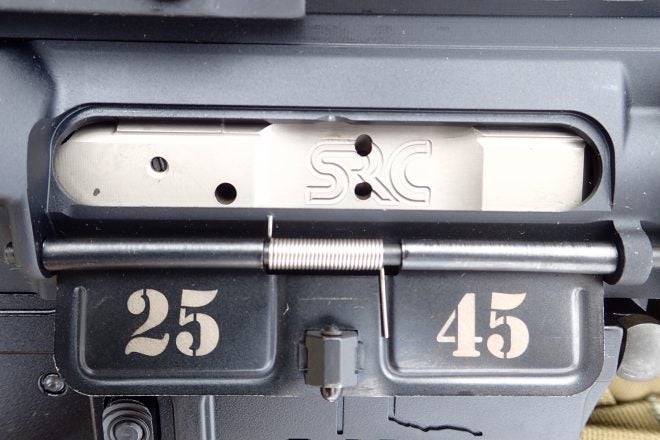
NP3 coated Relia-Bolt, nice touch of the caliber-marked dust cover
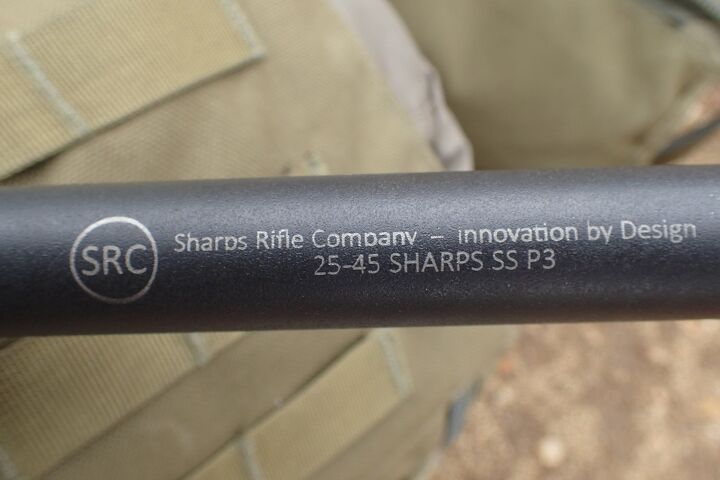
Range Time

This happened a lot
I was determined to find out the velocity of the round so I could answer Nathaniel F.’s previous questions regarding how it could be as fast as it was claimed to be. Testing velocities at 3,000ft above sea level with doppler radar, the cartridge was averaging 2952 ft/s with the 87 grain Speer Hot-Cor load. This is very close to their stated velocity out of 20″ and 24″ barrels. I have seen an interview with a SRC employee who states that they get a full burn in a 20″ barrel. Over 10 rounds, the extreme spread was 36 ft/s with a standard deviation of 13.2 ft/s. Not a bad spread for a factory load. Moving on to the accuracy and reliability portion of the test, things did not go so well. Shot seated off a front and rear rest, the rifle printed 5-shot groups in the 1.5-2 MOA range at 100 yards. Other testers have experienced the same accuracy issues with this same specific load. I also experienced 6 failure to feed malfunctions out of 100 rounds fired. The malfunctions occurred with Pmags, GI mags, and HK mags. It should be noted that Sharps Rifle Company does offer 3 other loads: 100gr “Swine Smasher”, 87gr FMJ, and 70gr Blitzking. Unfortunately, I did not have any of these rounds on hand for testing.
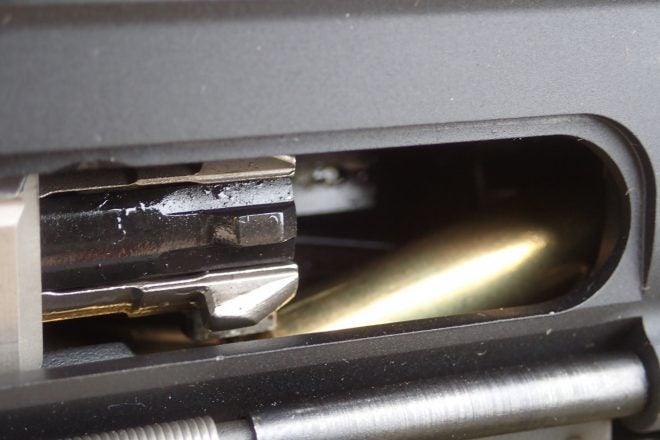
again?
Examining the rounds themselves, I discovered that the tips of the soft point ammunition were badly scarred. The rounds themselves were not feeding or chambering properly, something I have experienced many times before in AR-style rifles using soft-point ammunition. The scarring of the bullets most probably led to the accuracy issues downrange as well. I only wish that companies that select soft point bullets as one of their primary loads spend more time optimizing feed ramps to work better with them. I also tested the upper with a Gemtech Sandstorm suppressor. The .257 caliber rounds suppressed pretty well with the .30-caliber suppressor. If one already owns a .30-cal can, no need to go buy or make a can specifically for this round.
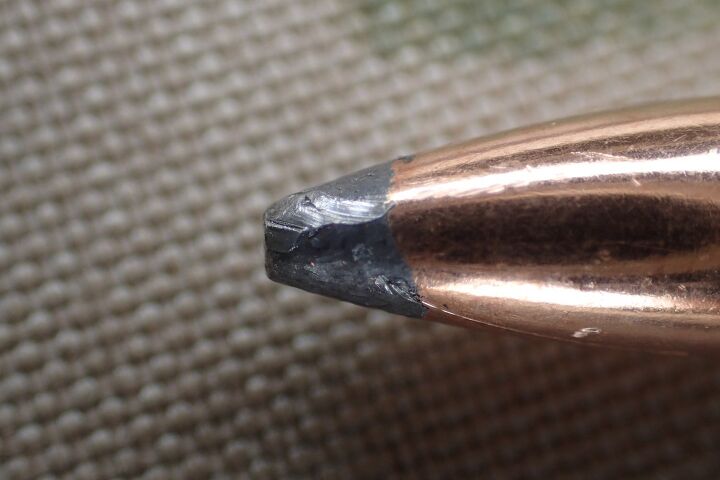
Scarring had a definite effect on accuracy


With a Sandstorm Suppressor attached
Overall Impression:
The .25-45 Sharps does have utility in that it is legal for hunting use in 48 states, and does provide reasonable performance for medium-size game at short to medium ranges. That being true, I can’t help but think of the questions already asked of it. What does it do better than other cartridges that fit within the AR15 platform?
Besides seeing that the the stated velocities come somewhat close to their factory numbers, I have seen nothing new to suggest that this is the be-all, end-all round for hunting at range out of the AR15 platform. 120 and 123gr 6.5 Grendel loads surpass the Sharps 87gr load right out of the muzzle in ft-lbs of energy, and at 400 yards in velocity. This is without factoring in that I’ve been able to get consistent .5 MOA groups out of my 6.5 Grendel, and haven’t encountered the same issues with SP ammo in that caliber. Sure, the stated goals of the cartridge are met handily. The .25-45 Sharps does indeed provide acceptable medium sized game performance with a cartridge that “Makes any MSR legal for big game hunting in all states where centerfire rifle hunting is permitted”. (Edit: it has since been pointed out that this may not fit the requirements of Indiana or Ohio) While the .25-45 Sharps has utility, it’s not the best solution for the purpose it seeks to take on. 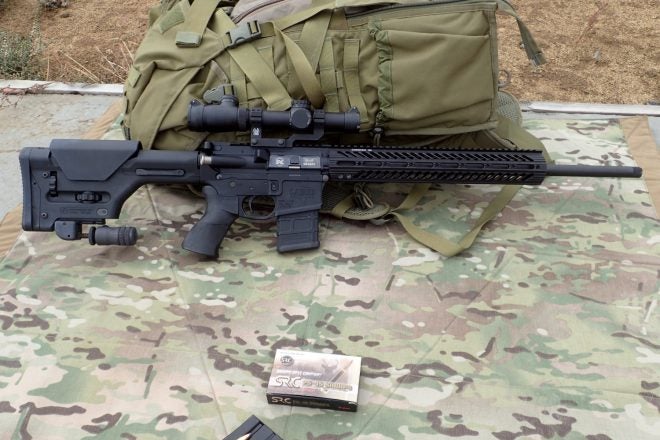
Pros:
- Suppresses well
- Reasonable cost per round ($1.25 avg)
- Outperforms most .223 rounds at short range
- Uses standard AR15 magazines
- Good fit and finish
Cons:
- Not terribly accurate
- Numerous Failure to Chamber malfunctions
- Outmatched by other AR15 compatible loads such as 6.5 Grendel
- Small selection of loads
- Velocity drops off at a significant rate after 300 yards
MSRP as tested: $720.00
 Your Privacy Choices
Your Privacy Choices
